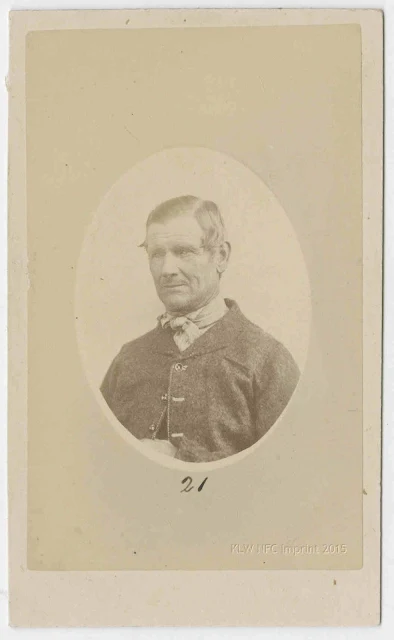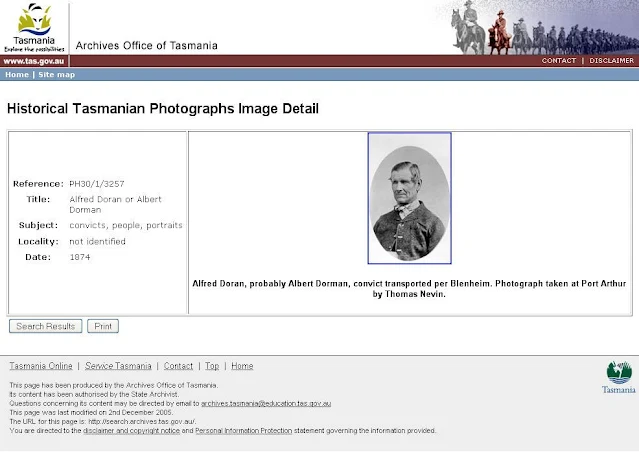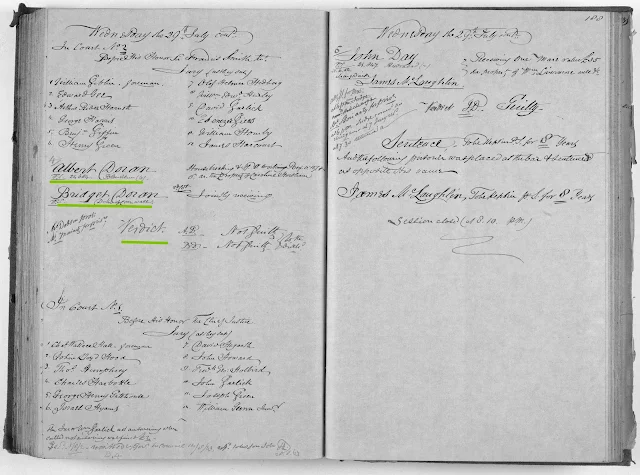Poor man: John DUNN(e) aka James DEMPSEY (prisoner, larceny, forgery)
Mock the French: Camille del Sarte's arrival at Hobart from Paris

The Legislative Council Chamber today, where John Dunn's dinner was held, 17 March 1854
Copyright © Parliament of Tasmania
Link: https://www.parliament.tas.gov.au/legislative-council
John Dunn snr, MLC & John Dunn jnr, MP
Biography: https://adb.anu.edu.au/biography/dunn-john-2009
On the 17th March, 1854, Captain Edward Goldsmith attended a farewell dinner to John Dunn (snr, 1790–1861), elected member of the City Council, who was returning temporarily to England on the Antipodes by reason of his wife's ill health. Various speeches delivered by attendees made reference to the end of convict transportation to the colony of Van Diemen's Land a year earlier; to the need for land grants as enticement to immigrants; and to the question of labourers acquiring agricultural land. In his own speech, John Dunn made reference to his support for the Dock Bill which would have had an impact on Captain Goldsmith's shipwright and patent slip construction. The comments regarding a "little foreign gentleman" which raised laughter were possibly directed at Monsieur Camille Del Sarte, a recently arrived musician from Paris. John Dunn snr died in Hobart in 1861. His son John Dunn jnr, M.P. for Dartmouth (UK), died of heat stroke on board the Mail Steamer in the Red Sea on the voyage to Hobart, reported by the Hobart Town Advertiser, 15 October 1860, page 2.
This vivid account, virtuosic in detail, of the dinner held to farewell John Dunn snr on his visit to England was published by the Hobart Courier, Monday, 20th March 1854:
TRANSCRIPT
FAREWELL DINNER TO MR. DUNN.Source: The Courier (Hobart, Tas. : 1840 - 1859) Mon 20 Mar 1854 Page 2 FAREWELL DINNER TO MR. DUNN.
One hundred and four gentlemen, who, if all electors, would form the proportion of about 8 per cent, of those who profess to be Mr. Dunn's solo constituents, or not one-twentieth of the whole body of city electors, attended a dinner given to him on Friday evening last, at the Legislative Council Chamber, previous to his departure for England by the Antipodes. The dinner was conducted in excellent style, and the whole company appeared to enjoy the delicacies provided, and the abundance of champagne and other wines by which they were accompanied, with the utmost zest. At each end of the room and at the entrance were placed inscriptions in honour of Mr. Dunn; while a large banner, bearing the Tasmanian Arms, floated over the Chair, which was occupied by Alexander Orr, Esq.
The chamber-band of the 99th was in attendance, and accompanied the several toasts with appropriate airs. The health of Mr. John Dunn was followed by a piece of music, composed, at two-hours' notice, expressly for the occasion by Mr. Martin, the band-master. The new service of place, used for the first time at the dinner given to Mr, Hathaway, was also placed in requisition; and nothing in short was omitted that could contribute to the success of the proceedings and the satisfaction of all parties, officially or otherwise, connected with them. Among the guests of the evening, R Dry, Esq., Speaker of the Legislative Council, had been invited, but in consequence of indisposition was compelled to decline. Among the gentlemen present were Colonel Last, Drs. Bedford, Hadley, Brock, Crooke, and Rev. Dr. Fry ; the Attorney and Solicitor-General, Mr. Justice Horne, Robert Power, Esq., His Worship the Mayor, C. B. Brewer, Esq., R. Lewis, Esq., Rev. Mr. Buckland, Edward Macdowell, Esq., Captain Goldsmith, Messrs. Worley, Reeves, Guesdon, Meikle, Harbottle, Champion, Hamilton, Basstian, &
During the evening a letter was read by the Chairman from Colonel Despard, also an invited guest, in which that gentleman expressed his regret at being prevented by illness attending the occasion.
After the customary loyal toasts had been given and duly honoured, the Chairman gave "Our guest, John Dunn, Jun. Esq.," and observed that he did so with mingled feelings of pain mid pleasure; of pain, on account of the domestic affliction which compelled his absence; of pleasure, because those who supported him in his election, and who represented the wealth, influence, and respectability of the colony were there. assembled to do him honour. He felt but too happy to notice that scarcely a single individual had expressed disapprobation at Mr. Dunn's leaving for a short time. In order to ensure his return as soon as possible, he had taken his passage by the overland route; but should any unforeseen cause of delay occur, he ( Mr. Orr) felt assured that the kind feeling shown would induce him to rejoin them as soon as possible. He had observed that about 800 persons had signed an address to Mr. McNaughtan, expressing the opinion that if Mr. Dunn should retire, Mr. McNaughtan was a fit person to represent the city. He (Mr. Orr) had been made the subject of some remarks in one of the colonial papers, which remarks he could afford to pass over with supreme contempt. There was in the community a little foreign gentleman, who exercised a greater degree of liberty than the inhabitants themselves; if it were not for that little firebrand, all would be united into a happy family. (Great laughter.) In his own country he had observed, no doubt, a small combustible called an " allumette ;" and although himself a very small spark, if he could only get any one to blow the bellows, he would blow them all up. (Continued laughter.) He did not believe there was one man in Hobart Town who really would desire Mr. Dunn's retirement; but even if Mr. Dunn were to resign, he (Mr. Orr) was quite convinced that his re-election would be certain. After making some further allusions to Mr. Dunn's public and private character, and many hopes for his safe passage to England and the restoration to health of Mrs.Dunn, the toast was given and responded to with great and general acclamation,' an additional cheer' being elicited by the sentiment, " A happy"and a quick return."
Mr. Dunn, when some degree of silence was obtained, acknowledged the compliment with much apparent emotion. On the eve of departure, he had had to transact business with more than 300 people. The manner in which his health had been proposed and received was highly gratifying ; and equally so was it to meet so many of his constituents, and to receive such proofs of their approbation. For more than two years he had had the honour of being their representative, and had ever endeavoured, concientiously and honestly, to do his duty. When he entered the Council, he did so free, unfettered, and untrammelled, excepting only on the question of transportation. In redeeming his pledge on that question, he did not deem it his duty to infuse it with every other question that might emanate from the Government. In supporting the Dock Bill, he did so in behalf of the public at large, and therefore he supported it at the best of his ability ; and he believed that many who formerly opposed that measure were now fully convinced that it ought to have been carried; the principal merchants, the majority of the shipowners, the most influential inhabitants, in short, of Hobart Town, were in favour of it, and it was rejected as being some way connected with the transportation question! Respecting the vote of want of confidence in Sir Wm. Denison, while he deprecated his conduct on the subject of transportation, he could not " go the whole hog" in abusing him.... etc etc
Link: https://nla.gov.au/nla.news-article2243886
Obituary: THE LATE JOHN DUNN, ESQ. (1861, January 23). The Cornwall Chronicle (Launceston, Tas.), p. 3.
Link: https://nla.gov.au/nla.news-article65567682
One piece of land held by John Dunn in New Town was later known as the Old Race Course and included Sunderland St., Derwent Park Rd, Main Rd and Main Line railway.

Map - Buckingham 33 - plan of an estate belonging to John Dunn, New Town, New Town Rvt,
Hobart to Launceston road, race course
Source: Archives Office of Tasmania ADRI: AF396-1-36
Series: County Maps, 1810 - 1959 (AF396)
John Dunn, forger
This prisoner's mugshot was taken at the Hobart Gaol on incarceration in 1873 by commercial photographer and government contractor Thomas J. Nevin. It was reprinted on the prisoner's discharge in 1875, each print numbered verso for the Municipal Police Photo Books as "13 & 11".
In the late 1890s to the mid 1910s, this mugshot and more than 300 similar prisoner photographs were salvaged from inactive police and prison records by convictarian John Watt Beattie for display and sale to local and intercolonial tourists at his “Port Arthur Museum” located at 51 Murray Street, Hobart. To cater to his visitors’ adventures in dark tourism, especially for those seeking photographs of their criminal ancestors, he wrote the man’s name, his ship and the factually incorrect phrase “Taken at Port Arthur 1874” on the versos of hundreds of these cdv’s, some of which he reprinted and housed in alphabetical order in family albums. Film production on site at Port Arthur of two versions in 1909 and 1929 of Marcus Clarke’s novel For the Term of His Natural Life (1874) offered the tourist an opportunity to witness filming and even participate as extras. On Beattie’s death in 1930, at least three hundred of these prisoner mugshots from the 1870s, both original duplicates and later copies of the 1870s originals, were acquired by the Queen Victoria Museum and Art Gallery, Launceston (Tas).
Fifty or so cdv's from Beattie's collection of Tasmanian "convict portraits" (as these photographs became known in the 20th century when exhibited on the walls of museum and art galleries) were removed from the QVMAG, Launceston in 1983 for display as part of the Port Arthur Development Project (at the former prison south of Hobart) and not returned. They were each numbered on the mount for relocation - for example, John Dunn's cdv was numbered "48" - and deposited instead at the Tasmanian Museum and Art Gallery, Hobart.

Recto inscription: number "48"
Prisoner John DUNN alias James DEMPSEY
Photographed by Thomas J. Nevin at the Hobart Gaol 1873-75
TMAG Ref: Q15585

Verso inscriptions: Numbers" 13 & 11"
"John Dunn alias Dempsey per Hydrabad 3"
"Taken at Port Arthur 1874" [incorrect]
Photographed by government contractor Thomas J. Nevin at the Hobart Gaol 1873-75
TMAG Ref: Q15585
Transportation and police records
John Dunn per Hydrabad 3 was 22 years old, a Roman Catholic, literate and with no previous convictions when he was imprisoned for stealing five heifers at Kildare, Ireland in March 1849. He was transported for 10 years in 1850 to the penal colony of Van Diemen's Land (Tasmania). In 1853 he received a ticket of leave, and a conditional pardon in 1854.

Name: Dunne, John
Record Type: Convicts
Departure date: 13 Sep 1850
Departure port: Queenstown
Ship: Hyderabad (3)
Voyage number: 332
Index number: 20661
Record ID: NAME_INDEXES:1389265
Archives Office Tasmania
1849-1854: James Dunn and James Dempsey
In 1854, James Dunn may have used the name of a fellow prisoner from Kildare, James Dempsey, as an alias for the purposes of obtaining work as a seaman in order to leave the colony for Melbourne. Both Dunn and Dempsey were from Kildare, both were sentenced on the same date, 10th March 1849, and both were transported for 10 years, though Dempsey travelled on the London.
1871-1875: John Dunn alias James Dempsey
Nothing further was heard from John Dunn until he was sentenced on 28 December 1871 to 4 years for uttering a forged cheque. The press reported the case briefly on 10 Nov 1871 in this article:
TRANSCRIPT
POLICE COURT. LAUNCESTON. Wednesday 8th Nov., 1871Source: Cornwall Chronicle (Launceston, Tas.), Friday 10 November 1871, page 2
(Before Thomas Mason Esq. P. M.)
FORGERY.— John Dunne alias James Dempsey was brought up on remand from the 1st instant, charged with uttering a forged cheque for £6 13s 10d.
Mr Robert George Horne of Deloraine deposed that he had no account at the Commercial Bank, and the signature "Robert Horne" to the cheque for £6 13s 10d produced was not his, he signed "R. G. Horne"; the prisoner's face was familiar to him but he knew no more of him than that; he found the prisoner had been in his employ at sometime or other.
Mr Ritchard Thompson, assistant in the shop of Messrs. Farrelly Brothers, deposed that the prisoner tendered the cheque to him on the 27th October in payment for goods selected, to the amount of 34s; the cheque purported to be signed by Robert Horne in favour of James Dempsey; asked him if it was Robert Horne of Deloraine and prisoner said "yes"; Mr B Farrelly took the cheque to make enquries and while he was away the prisoner went several times to the door and left before Mr Farrelly returned; he had never seen the prisoner before that day.
Mr J. Lagor deposed that the prisoner called at his shop on the 27th October and wanted to buy two shirts and a pair of trousers, and to pay by a cheque for £5.9s, purporting to have been signed by Robert Horne, and drawn in favor of James Dempsey. He did not like the look of the cheque and gave it back to the prisoner.
Mr. Cathcart deposed that there was no person by the name of Horne who had an account at the Commercial Bank on the 27th October.
Serg. Coghlan in his evidence detailed how he, with District Constable Murphy, had traced the prisoner to a hut at Piper River and had arrested him there. He denied having been to Messrs Farrelly's establishment buying clothes.
The prisoner said he had nothing to say at present and no witnesses to call.
He was then committed for trial.
Link: https://nla.gov.au/nla.news-article67111798
John Dunn aka James Dempsey was arrested for trying to to buy two shirts and a pair of trousers with cheques forged with his former employer's signature. When he was arrested he was wearing "a diagonal ribbed blue sacque coat, grey striped trousers, and black hat." The sacque coat, fashionable in the 1860s-70s was so-called because it was loose-fitting, but by the 1880s to 1900s coats and matching trousers became narrowly-fitted, cut closer to the body. This example of a loose-fitting sacque coat was worn by Mr Wright, a Templar, when he posed standing next to Thomas J. Nevin's big table-top stereograph viewer, ca. 1870.

Subject: A Loyal United Lodge member in ceremonial apron with a gold medal on lapel, perhaps Mr. Wright visiting from Brisbane, 1870 for the Lodge anniversary
Posed with hand resting on Nevin's table top stereograph viewer
Photographer: Thomas J. Nevin, 140 Elizabeth St; Hobart
Details: hand tinted carte-de-visite placed inside an album leaf frame
Copyright © The Lucy Batchelor Collection 2009 (scans courtesy of the Bishop family)
Warrant and arrest: police gazette notices

TRANSCRIPT
LAUNCESTON. - On the 28th ultimo, by Thomas Mason, Esq., J. P. , for the arrest of James Depmsey, charged with having on the 27th ultimo, at Launceston, feloniously uttered a certain forged order for the payment of £6.13s.10d., with intent to defraud.
Description
About 35 years old, 5 feet 6 or 7 inches high, fresh complexion, fair hair; wore a diagonal ribbed blue sacque coat, grey striped trousers, and black hat.

Warrant for arrest of John Dunn, known to police only as James Dempsey on 3 November 1871:
TRANSCRIPT
James Dempsey, proper name Dunne, per Hydrabad 2, has been arrested by D. C. Murphy and Sergeant Coghlan, of the Selby Territorial Police.Proper name John Dunne (e), arrest published in the police gazette the same day, 3 Nov 1871.
Source: Tasmania Reports of Crime for Police, J. Barnard, Gov't printer
John Dunn was sent to the Port Arthur prison on 17 February 1872. Nearly two years later, he was transferred to the House of Corrections, Hobart Gaol on 29 December 1873 where he was photographed by government contractor T. J. Nevin. On the 7 June 1875 John Dunn "or James Dempsey" was discharged from Hobart, the residue of his four year sentence remitted.

John Dunn as James Dempsey
Discharged 11 June 1875
Source: Tasmania Reports of Crime for Police, J. Barnard Gov't Printer
John Dunn or James Dempsey per Hydrabad 3 was sentenced on 28 December 1871 to 4 years for uttering a forged cheque. When he was discharged from the Hobart Gaol on 11th June 1875, this police gazette notice recorded his native place as Kildare (Ireland), his age at 41 yrs old, height at 5 feet 5 inches in height, with brown hair and a scar on forehead. He was FS (free in servitude).
He was charged with being drunk and incapable at Launceston on 1 Feb 1876 and fines 10/s
Link: https://nla.gov.au/nla.news-article37139448
On 25 August 1881 he was tried for larceny at the Supreme Court Launceston. This record makes no mention of his alias "James Dempsey" although it was recorded by police by the time he was discharged in 1875.
1881: John Dunn(e)
In 1881 John Dunn was sentenced to 12 months for larceny at the Supreme Court Launceston (Tasmania), discharged on 8 October 1882. He was admitted to the Launceston Invalid Depot and discharged at his own request in 1888. Death not recorded.
Link: https://libraries.tas.gov.au/Digital/POL709-1-22/POL709-1-22_1888p173

Dunne, John
Record Type: Court
Status: Free by servitude
Trial date: 1 Jul 1881
Place of trial: Launceston
Offense: Larceny
Verdict: Guilty
Prosecutions Project ID: 119242
Record ID: NAME_INDEXES:1589083
Archives Office Tasmania
RELATED POSTS main weblog





















